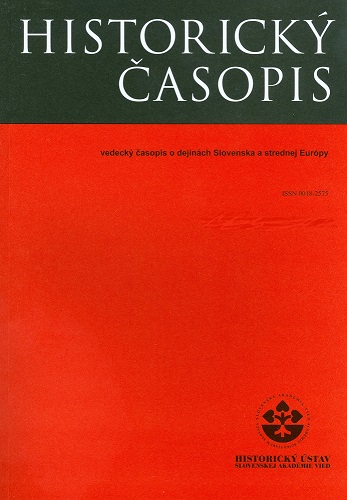Profesionalizácia uhorského meštianstva a začiatky Bildungsbürgertumu v mestách Uhorského kráľovstva
The Professionalization of the Bourgeoisie and the Beginnings of the Bildungsbürgertum in the Cities of the Kingdom of Hungary
Author(s): István H. NémethContributor(s): Tünde Lengyelová (Translator)
Subject(s): History, Modern Age
Published by: SAV - Slovenská akadémia vied - Historický ústav SAV
Keywords: Bildungsbürgertum; Professionalism; Urban history; City leader elite; Prosopography
Summary/Abstract: NÉMETH, István. The Professionalization of the Bourgeoisie and the Beginnings of the Bildungsbürgertum in the Cities of the Kingdom of Hungary. Historický časopis, 2022, 70, 4, pp. 609–637, Bratislava.In Hungarian historiography, the term Bildungsbürgertum is primarily used to describe the bourgeoisie of the 19th century, although German historiography dates the roots of the term back to the 16th and 17th centuries. The content of the term also differs between Hungarian and German historiography: Hungarian historiography, using primarily Péter Hanák‘s definition, uses the term to refer to the free-spirited intellectuals, while German historiography generally uses the term to refer to the educated intellectuals, including clergy, state officials, etc.I describe a process in the context of the ruling elite of the city of Košice that also indicates the extent to which the higher level of society was diverse. By the beginning of the 18th century, the elite in this city was made up of a very wide variety of persons of higher status, which I will show by means of a prosopographical analysis. However, the members of the elite were also very closely related, an analysis which I have carried out primarily on the basis of the registers of births. In the course of the analysis, I will show that even in this early phase of the Hungarian bourgeoisie, a qualified class of city leaders with knowledge of state administration was formed, or was beginning to form, which was very diverse in its social relations: it extended its network of contacts to the local bourgeoisie, the state official class and the local nobility. This heterogeneous group was bound together by a very mixed sense of order and occupation, which also created this socially distinct, intermediate layer. I present the early history and development of this group.
Journal: Historický časopis
- Issue Year: 70/2022
- Issue No: 4
- Page Range: 609-637
- Page Count: 29
- Language: Slovak

